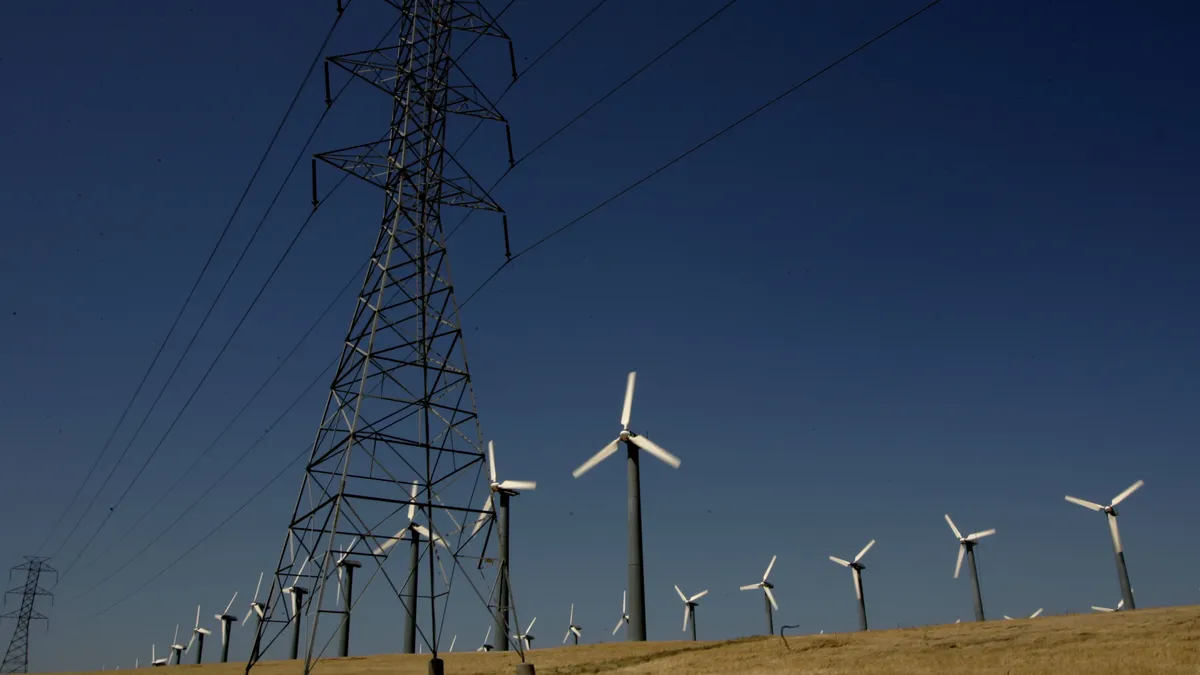Dive Brief:
- The California Independent System Operator (CAISO) approved a transmission plan Thursday that includes 23 projects, estimated to cost nearly $3 billion, to cope with the dramatic increase in renewable generation and forecasted load growth in its footprint.
- The plan represents a massive increase in spending, compared to an average of $217 million earmarked for transmission in the last five years. The current package of transmission projects will be an important addition of infrastructure to kick off the next phase of build-out to meet California’s clean energy goals, CAISO President and CEO Elliot Mainzer said at a Thursday meeting.
- Earlier this year, CAISO issued for the first time a draft transmission outlook plan which foresaw the need for $30.5 billion worth of transmission build-out in its system over the next two decades.
Dive Insight:
Every year, CAISO conducts an assessment of the transmission required in its footprint over a decade-long planning horizon. The 2021-2022 transmission plan, approved by the agency Thursday, found that the need for new generation over the next 10 years to achieve clean energy and other goals has increased rapidly.
For context, the 2020-2021 transmission plan estimated the addition of 1,000 MW of new resources every year, while the current one is based on adding approximately 2,700 MW annually. The next plan, meanwhile, is expected to consider adding over 4,000 MW of new resources each year for the next decade.
CAISO attributed this aggressive pace of development to multiple factors – California’s clean energy goals, the electrification of the transportation sector and other industries, as well as the need to bolster the electric grid after California’s 2.2 GW Diablo Canyon nuclear plant and a series of gas-fired plants are shuttered over the next few years.
As more solar energy and battery storage, as well as potential geothermal and offshore wind resources, come online, “the transmission system will also need to be expanded, upgraded, and reinforced to access and integrate these resources, as well accommodate the expected resurgence in electricity consumption as transportation and other industries electrify to reduce their carbon impact,” the plan states.
However, building out the transmission system presents a fair share of challenges, Stoel Rives partner Seth Hilton said. Siting and permitting new projects can be difficult, due to local resistance to building transmission lines, for instance. California also has to contend with the potential risks that wildfires pose to its transmission system, he said.
As part of its planning process, CAISO conducted studies of wildfire-related power shut-offs in both Northern and Southern California, but did not identify any opportunities for transmission projects that would reduce the impacts of those outages, the grid operator said.
CAISO’s draft $30.5 billion, 20-year transmission outlook, prepared with input from the California Public Utilities Commission and California Energy Commission, was based on the assumption that the state will need to add a combined 120 GW of utility-scale solar, energy storage, offshore wind, out-of-state clean energy, and other resources to the system by 2040. The grid operator decided to put together the longer-term plan in addition to its 10-year planning process given the long lead times associated with building out transmission.
Pacific Gas & Electric (PG&E) considers the transmission planning effort to be highly valuable for policymakers and planners as California moves toward its clean energy goals, the utility’s Electric Engineering, Asset and Regulatory Vice President Christine Cowsert said during the meeting. Of the 23 projects included in CAISO’s plan, 18 are in PG&E’s service territory. A majority of the remaining projects are in Southern California Edison's footprint.
The utility also cautioned that additional study may be needed next year, especially for the four large projects in the plan that are eligible for competitive solicitations, since they will involve major changes to the grid such as new substations.
“In-service dates for these projects, as soon as 2028, are aggressive – especially for such complicated projects with potential competitive developers. Building brand new 500 kV stations, new 230 kV lines … and high-voltage DC lines and converter stations in highly populated, dense areas will be complex undertakings,” Cowsert said.














